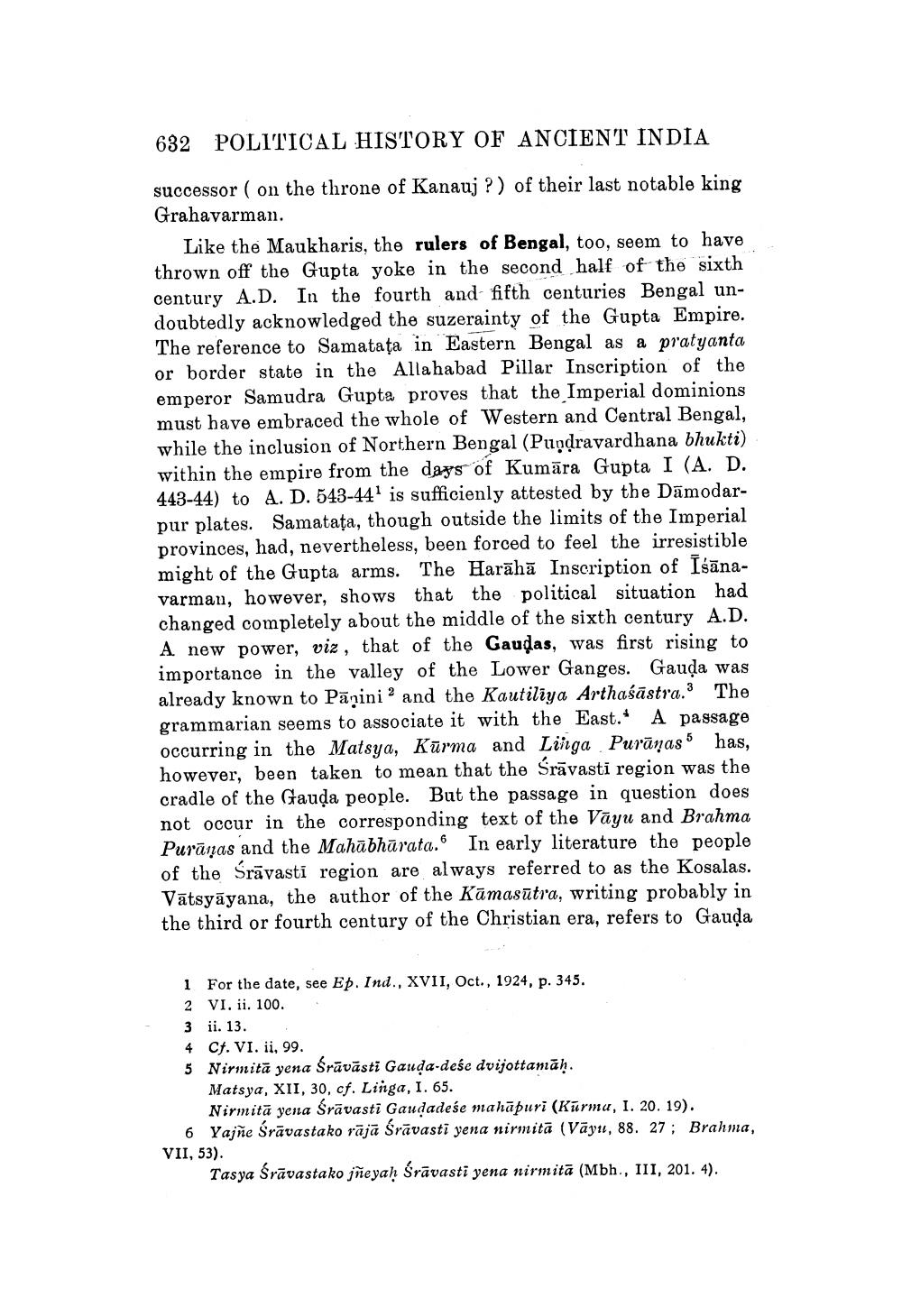________________
632 POLITICAL HISTORY OF ANCIENT INDIA
successor ( on the throne of Kanauj?) of their last notable king Grahavarman.
Like the Maukharis, the rulers of Bengal, too, seem to have thrown off the Gupta yoke in the second half of the sixth century A.D. In the fourth and fifth centuries Bengal undoubtedly acknowledged the suzerainty of the Gupta Empire. The reference to Samatata in Eastern Bengal as a pratyanta or border state in the Allahabad Pillar Inscription of the emperor Samudra Gupta proves that the Imperial dominions must have embraced the whole of Western and Central Bengal, while the inclusion of Northern Bengal (Pupdravardhana bhukti) within the empire from the dars of Kumāra Gupta I (A. D. 443-44) to A. D. 543-44' is sufficienly attested by the Dāmodarpur plates. Samataţa, though outside the limits of the Imperial provinces, had, nevertheless, been forced to feel the irresistible might of the Gupta arms. The Harāhā Inscription of Išānavarman, however, shows that the political situation had changed completely about the middle of the sixth century A.D. A new power, viz , that of the Gaudas, was first rising to importance in the valley of the Lower Ganges. Gauda was already known to Pānini ? and the Kautiliya Arthaśāstra. The grammarian seems to associate it with the East. A passage occurring in the Matsya, Kūrma and Linga Purānas 5 has, however, been taken to mean that the Srāvasti region was the cradle of the Gauda people. But the passage in question does not occur in the corresponding text of the Vāyu and Brahma Purūnas and the Mahabharata. In early literature the people of the Srāvasti region are always referred to as the Kosalas. Vātsyāyana, the author of the Kāmasūtra, writing probably in the third or fourth century of the Christian era, refers to Gauda
1 For the date, see Ep. Ind., XVII, Oct., 1924, p. 345. 2 VI. ii. 100. 3 ii. 13. 4 Cf. VI. ii, 99. 5 Nirmitā yena Srāvāsti Gauda-deće dvijottamāḥ.
Matsya, XII, 30, cf. Linga, I. 65.
Nirmitā yena Śrāvasti Gaudadeśe mahāpuri (Kurma, I. 20. 19). 6 Yajne Śrāvastako rāja Srāvasti yena nirmitā (Vāynt, 88. 27; Brahma, VII, 53).
Tasya Śrāvastako jñeyaḥ śrāvasti yena nirmitā (Mbh., III, 201. 4).




